
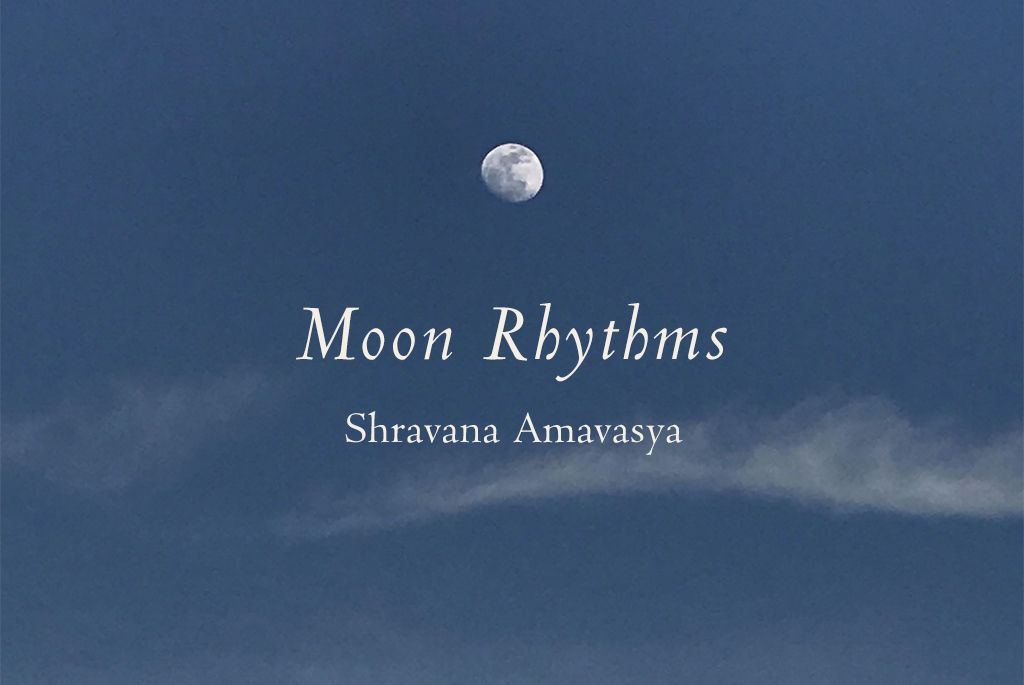
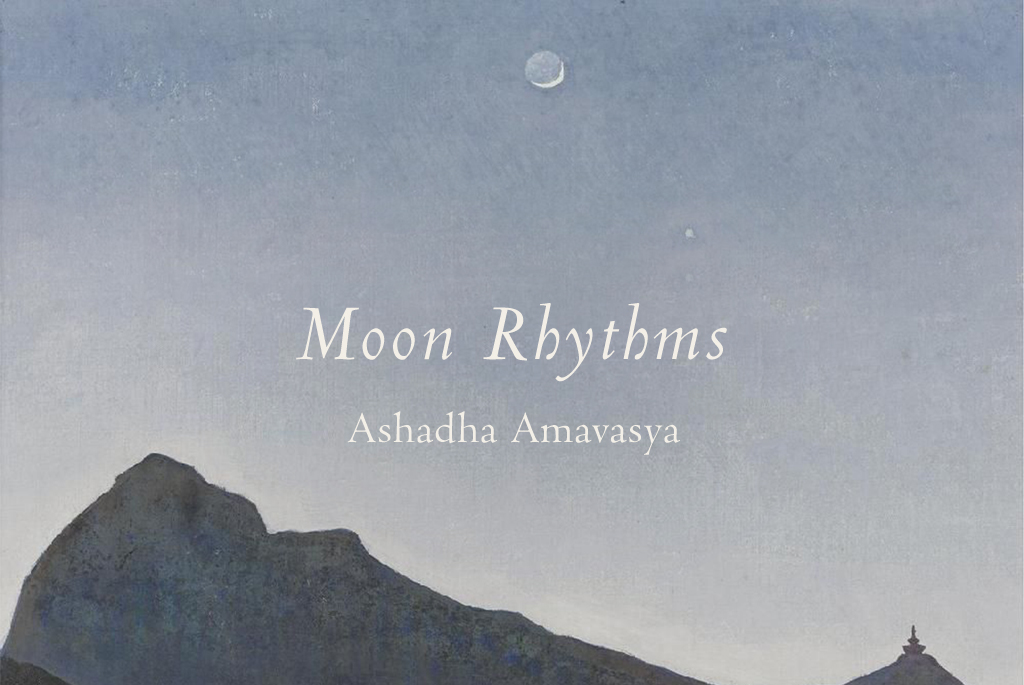
The Moon has been a perennial source of inspirations for all artists – poets, musicians, painters, photographers and even playwrights. And a painting, that most immediate of representational forms, offers a unique delight. So, this month in our Moon Rhythms we have turned to paintings depicting the Moon.
The beauty of a painting is that it offers each of us a unique subjective experience. Artworks can evoke in us a deeply emotional response that may surprise us with its unexpectedness. A painting can also offer a personal moment of solace even as it delights us with its beauty. While a painting takes us to a time and place – where it was painted, by whom, etc., it can also take us to an emotion, a feeling, a way of being.
These eight painting and a photograph all have the Moon as the common motif. Beyond that, they belong to different times and to different schools of art – meaning that each is a different way of seeing and rendering the world. In each painting there is the Moon and a sense of beauty but also two unique perspectives – that of the artist who, in his depiction captured and shared a certain mood, a certain vision, a way of interpreting the physical world; and that of person viewing the painting, i.e., you.
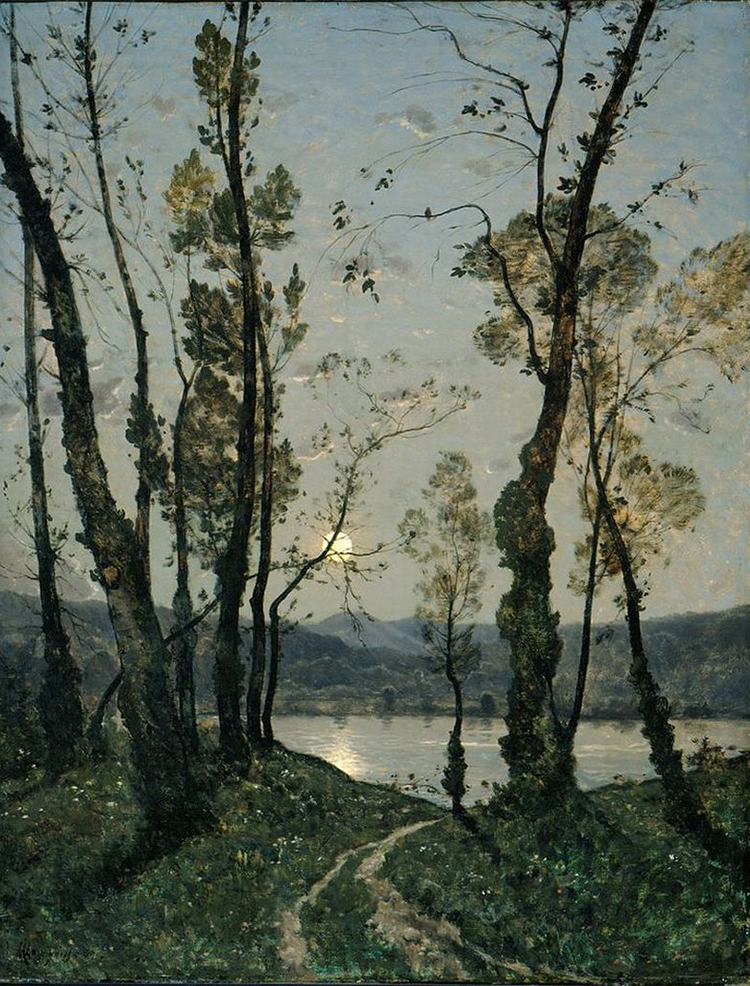
Moonlight 1889
Henri-Joseph Harpignies (b. 1819 – d.1916)
A French landscape painter, Harpignies was of the Barbizon school. Which as a movement was active approximately from 1830 to 1870. The painters of the Barbizon school “were part of an art movement towards Realism in art, which arose in the context of the dominant Romantic movement of the time.” Most of the works in this school are landscape paintings. And among the prominent features of this school are “tonal qualities, colour, loose brushwork, and softness of form”.
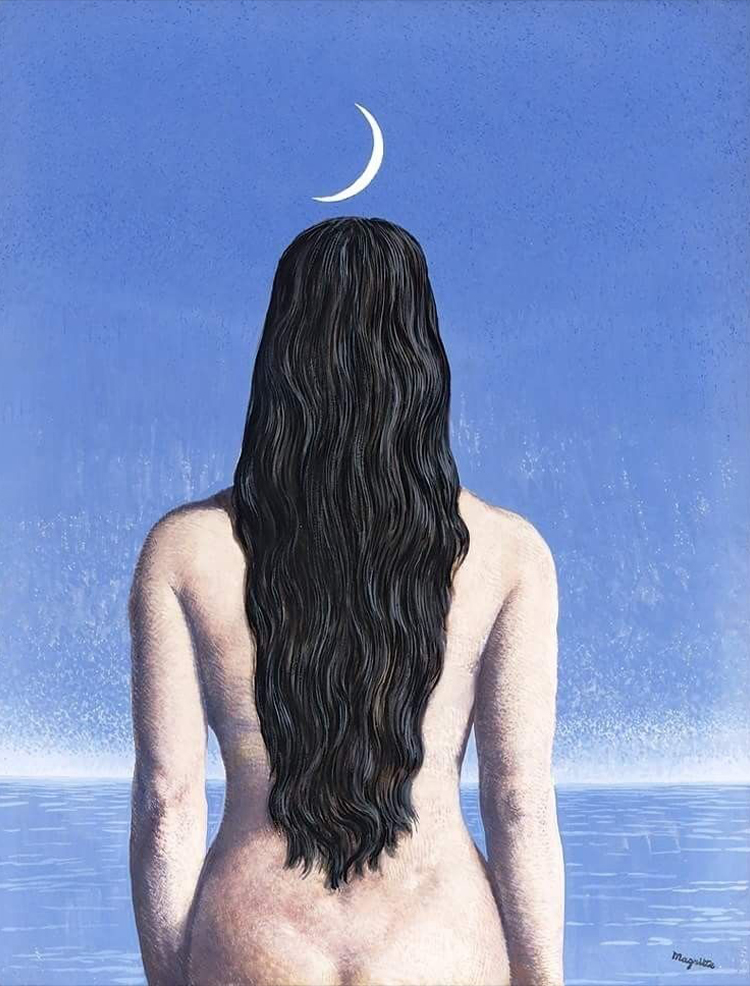
The Evening Gown
René Magritte (b.1898 – d. 1967)
A Belgian Surrealist artist, Magritte often stated that he left it to the viewer to find their own meaning in his painting. Here then is a nude woman with her back to us, standing in front of a calm river. Above a beautiful crescent Moon illuminates a clear night sky and seems to almost adorn her head. There is a sense of serenity in the painting. But there is also a subtle play of sensibilities. She is turned away from us, seemingly lost in private contemplation, one that we intrude upon. And in her gorgeous figure and lush hair there is a sense of the archetypal Woman being invoked. And then finally there is the incongruity of naming a picture of a nude woman – “The Evening Gown”.
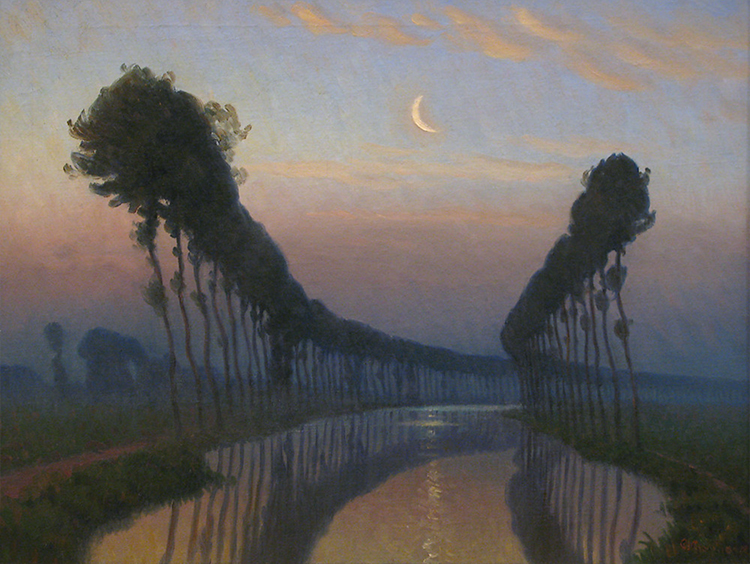
The Allee Water 1895
Charles Guilloux (b.1866 – d.1946)
French artists Charles Guillox was a “self-taught artist who critics like Albert Aurier, Félix Fénéon, and Rémy de Gourmont liken to the time of the Symbolist movement.” Symbolism was a late nineteenth-century movement in art. It was “of French, Russian and Belgian origin in poetry and other arts seeking to represent absolute truths symbolically through metaphorical images and language.”
In this soft painting of a Crescent Moon over a canal edged by trees there is something interesting. The curve of the canal echoing the curve of the Crescent Moon is simultaneously natural and contrived. The curves pull the eye in and then take it to the far horizon, which too seems to curve away.
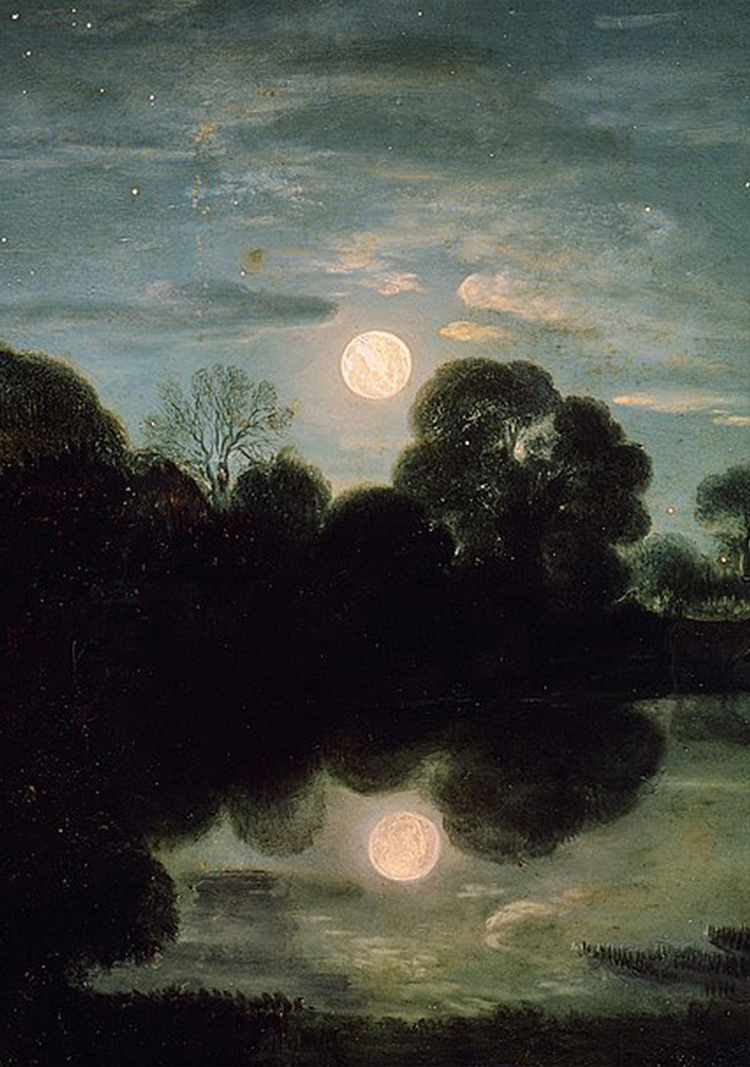
Moon Night
Gennadiy Dneprov
This photograph of a Full Moon is included in this selection because it feels like a painting. And because the allure of Moon against the trees in this composition is irresistible.
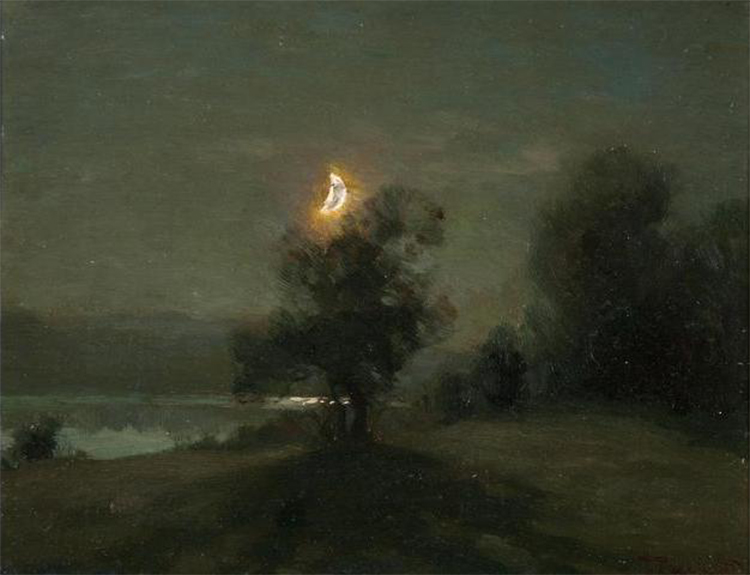
“Clair de lune sur le Lac d’Aiguebelette” 1906
François-Charles Cachoud (b.1866 – d.1943)
This moonscape unfolds slowly – from the luminescence of the crescent Moon the eye slowly traverses the landscape, taking in the details which lull the mind into a moment of serenity.
François Charles Cachoud was a French painter of the Moon and moonlit nightscapes. He is known today for his night effects and his chiaroscuro. The artistic criteria of his works are close to those of the Barbizon School.
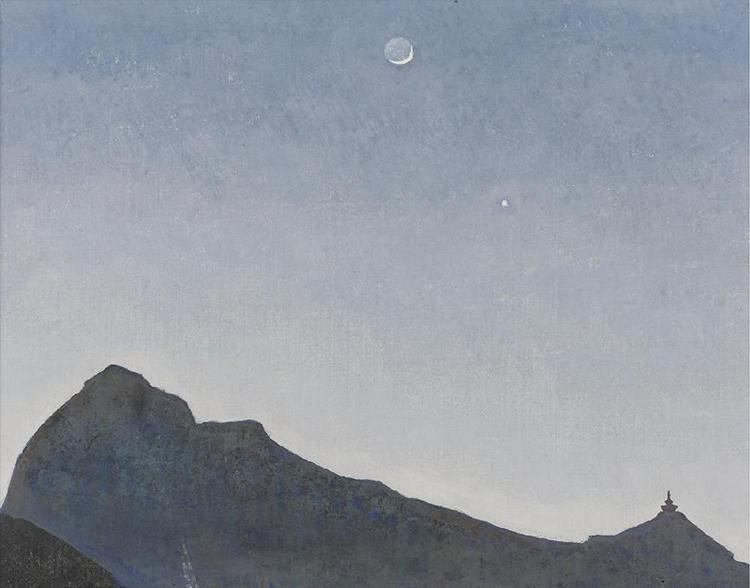
New Moon from The Series Himalayan
Nicholas Roerich (b.1874 – d.1947)
This almost meditative study in greys and blues is deeply peaceful. The bare landscape, the simplicity of the lines, the paucity of elements all pull the eye to the New Moon – the crescent which appears on the day after a moonless night. And yet the remainder of the Moon is also visible. Seemingly suggesting that that which is invisible is also present. The only human element in the painting is the pagoda-like top typical of Himalayan monasteries visible in the right-hand corner.
Nicholas Roerich was “a Russian painter, writer, archaeologist, theosophist, philosopher and public figure, who in his youth was influenced by a movement in the Russian society around the spiritual. He was interested in hypnosis and other spiritual practices and his paintings are said to have hypnotic expression.” He died in Naggar, Himachal Pradesh. Roerich painted a series of studies on the Himalayan Ranges, including the ‘New Moon’. Of the painting style in the Himalayan series it is said: “The hypnotic, immersive nature of his works truly absorbs the onlooker, leaving one with a sense of peace and tranquillity as one moves with the series through the gallery.”
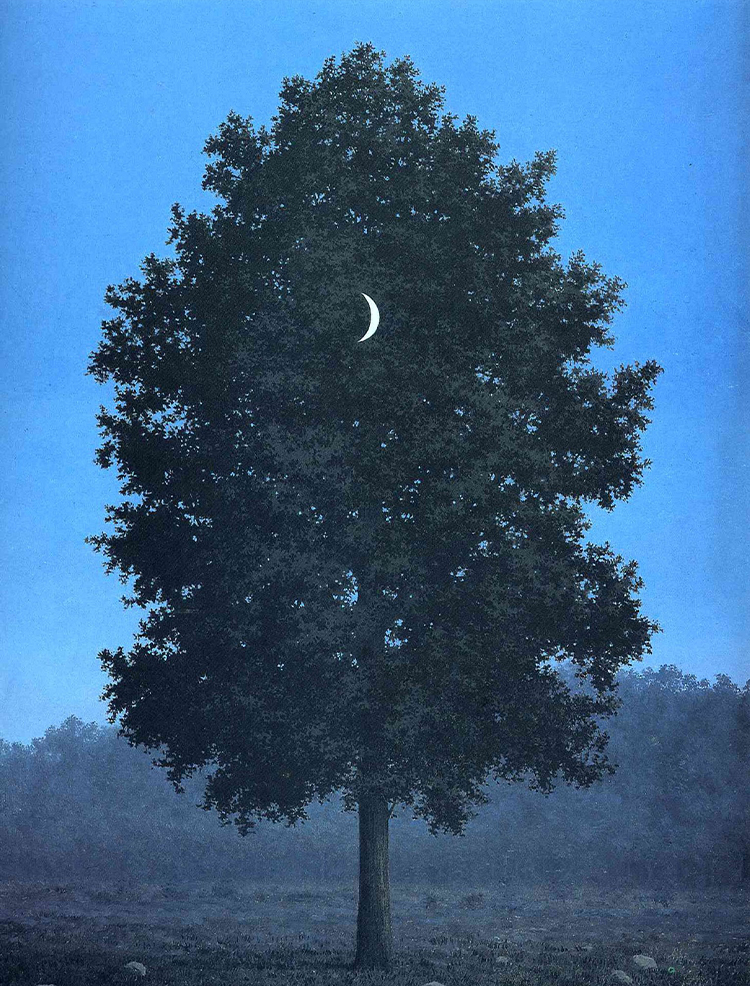
September 16
Rene Magritte (b. 1898 – d. 1967)
A Belgian Surrealist artist, who became “well known for creating a number of witty and thought-provoking images. Often depicting ordinary objects in an unusual context, his work is known for challenging observers’ preconditioned perceptions of reality. His imagery has influenced pop art, minimalist art and conceptual art.”
In this witty, strange painting a crescent Moon is superimposed upon a tree. Rene Magritte called his practice of intentional juxtaposition of incongruous objects “objective stimulus.” With reference to this image, Magritte observed: “I have just painted the moon on a tree in the grey-blue colours of evening.”
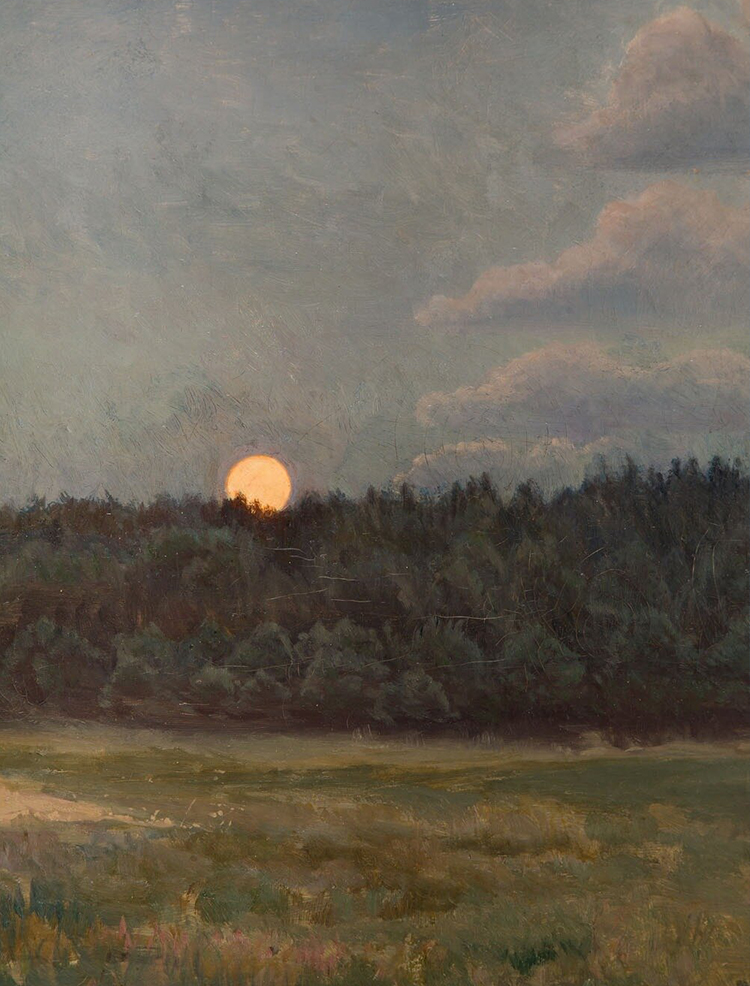
Moonrise 1888
Józef Chełmoński (b.1849 – d.1914)
A Realist Polish painter and illustrator, Chelmonski was known for his landscape painting. With nature as his inspiration and subject matter, Chelmonski evokes a moment of peace and beauty. The understated elegance and simplicity of this painting slowly pulls the viewer into deeper contemplation of the beauty of this moonrise and an experience of tranquillity.

Detail from Flight into Egypt c.1609
Adam Elsheimer
This is a detail from a painting by a German Renaissance painter – Adam Elsheimer. This painting is “thought to be the first naturalistic rendering of the night sky in Renaissance art”. In this painting “Elsheimer has depicted the biblical Flight into Egypt, Joseph, Mary and baby Jesus seek refuge from possible persecution by Herod. For its innovative fusing of religious and landscape elements, and its detailed juxtaposition of light and darkness, The Flight into Egypt is one of Elsheimer’s most well-known and lauded works.”